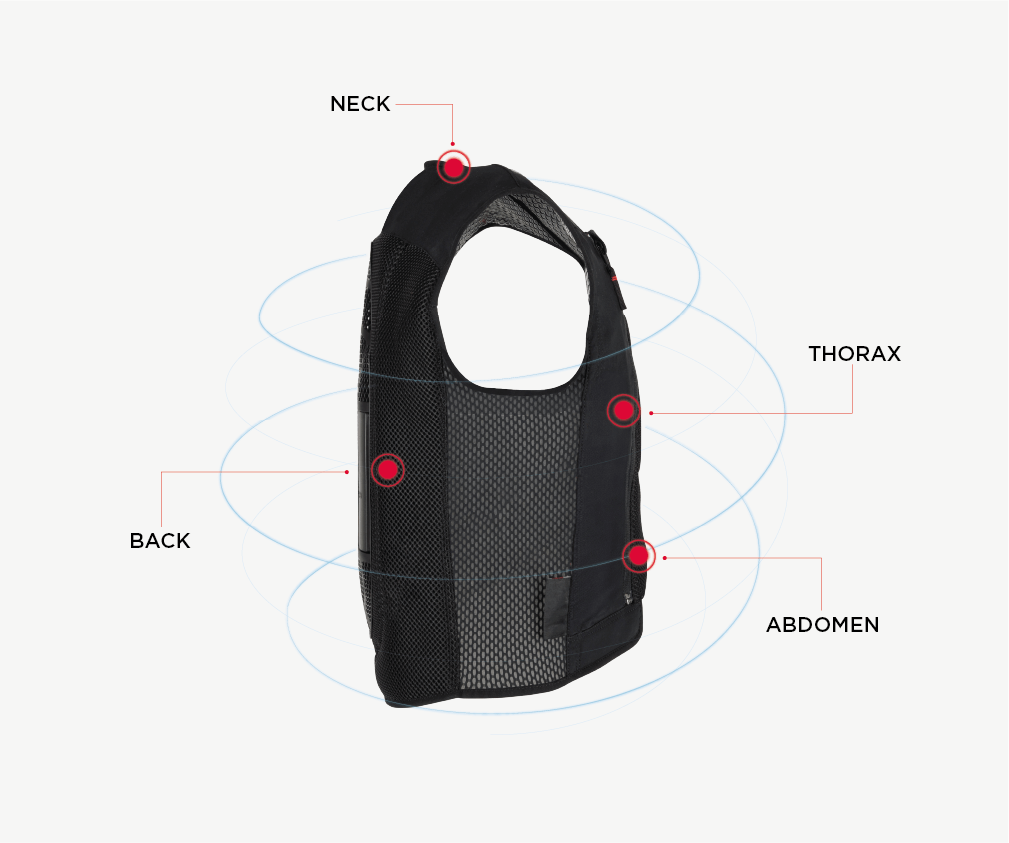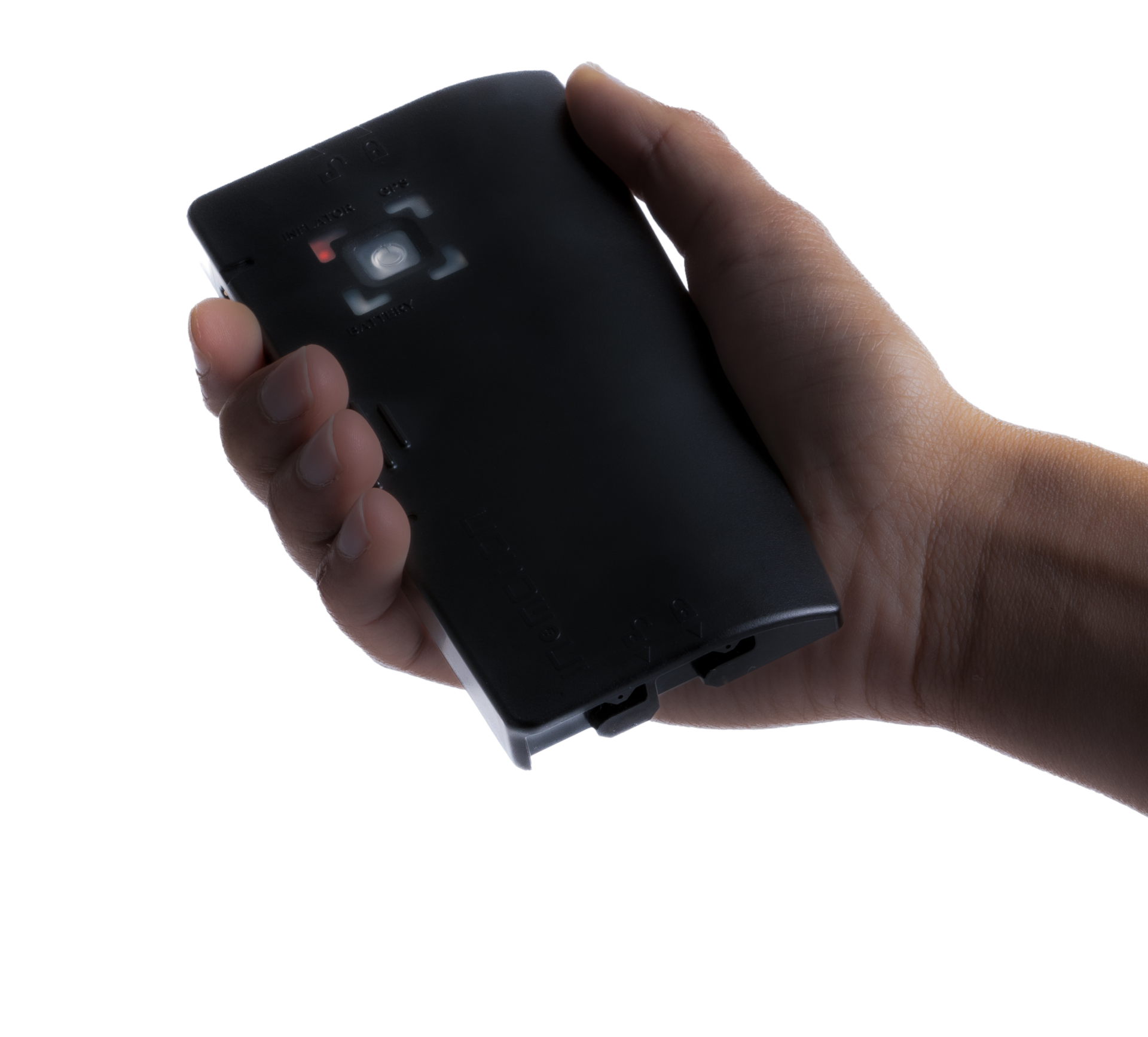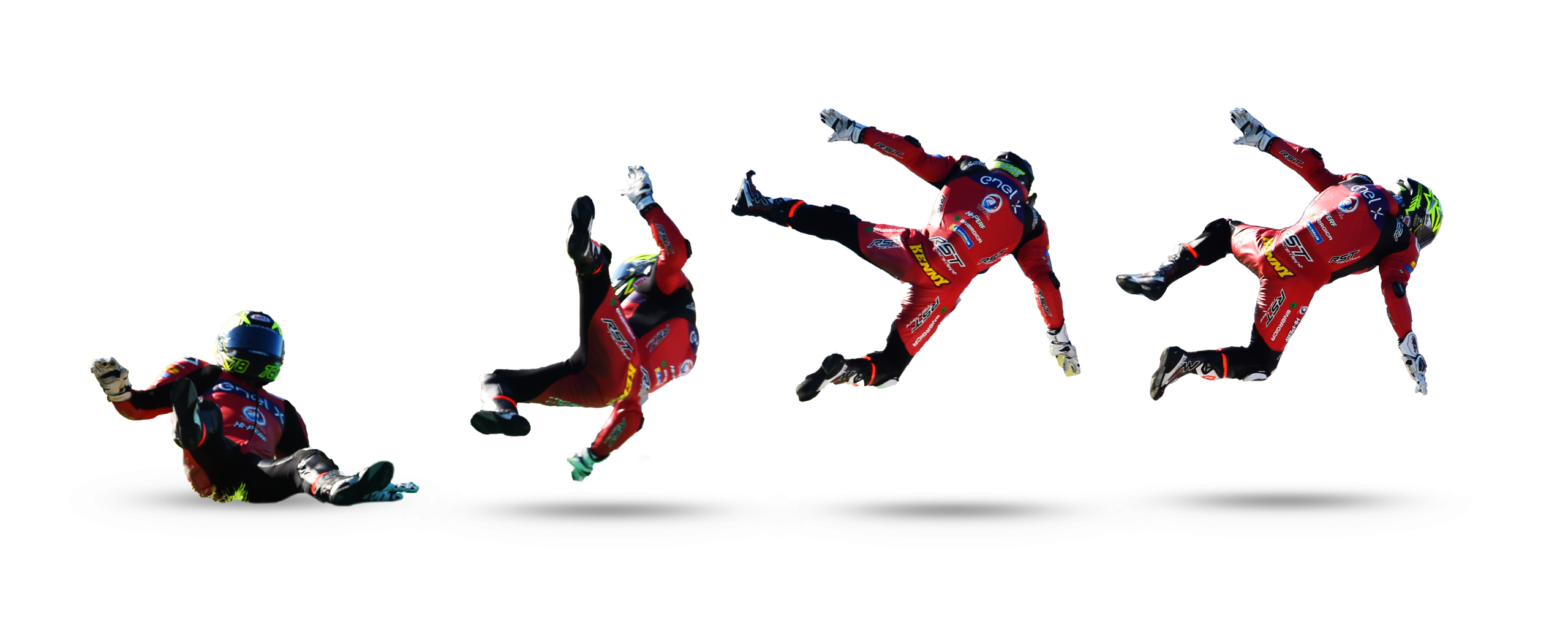Protecting the human body, In&motion’s core expertise
Once a fall has been detected, it is the airbag’s roll to effectively protect the human body.
To develop products offering optimum protection, In&motion relies on the expertise of doctoral students in biomechanics, epidemiology and accidentology. Their research enables us to analyze how the human body reacts to impact, in order to identify the areas that need to be protected by airbags. We also work in close collaboration with the Gustave Eiffel University, a world leader in traumatology.
How does the airbag protect?
The Abbreviated Injury Scale (AIS ) is an indicator used to rank and compare injuries by degree of severity. It ranges from 0 to 6, 6 being the highest.
Epidemiological studies evaluate the severity of injuries sustained in accidents on the basis of the AIS, thus identifying which body zones represent a major risk of injury and should therefore be given priority for protection.

Analyses show that the thorax is the most important area of the trunk to protect, followed by the spine and cervical vertebrae. In the event of an accident on the road, the abdomen is also a vital area to cover, due to the presence of other vehicles or street furniture. Shoulders and ribs, on the other hand, are not considered vital zones, but may be exposed during track or off-road riding, hence the need for a dedicated product.
The airbag’s mission is to absorb impact energy, therefore minimizing injury and damage, and reducing the AIS score.
A technology with 12,000 falls covered
The In&box’s on-board sensors gather precise accident data: location, impact speed, and accelerations experienced during a fall. To date, the In&motion system has covered and recovered data from over 12,000 accidents, enabling continuous improvement of the fall detection system.

